
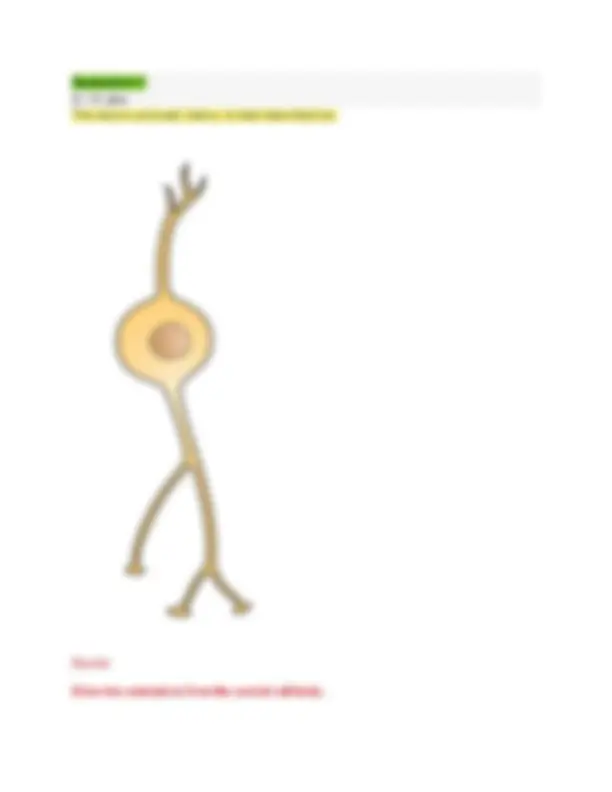
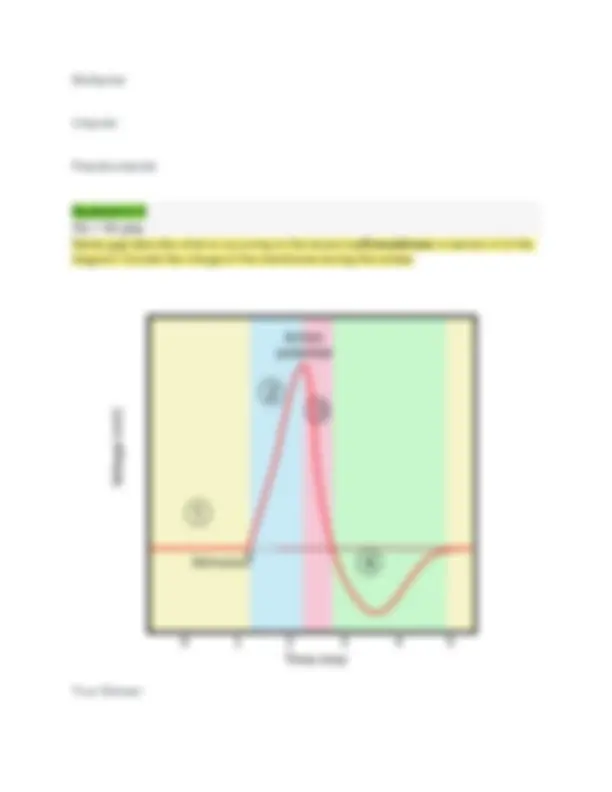
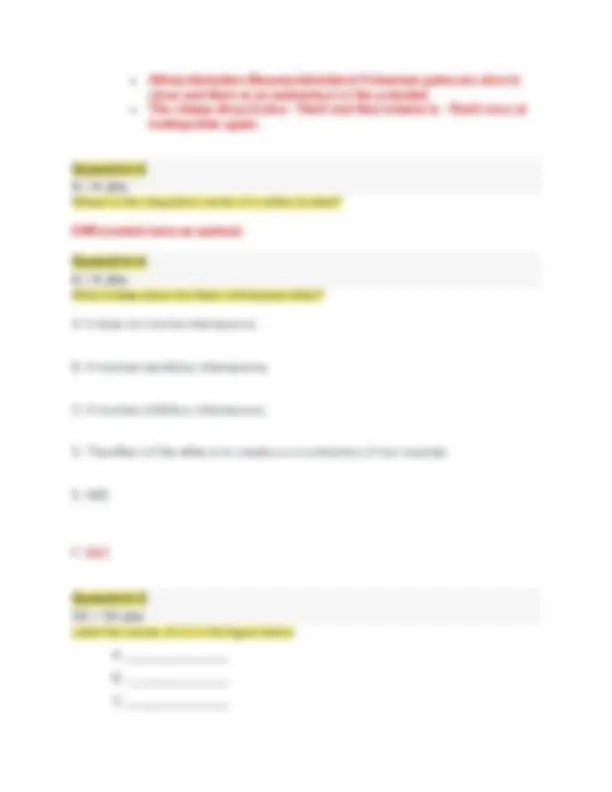
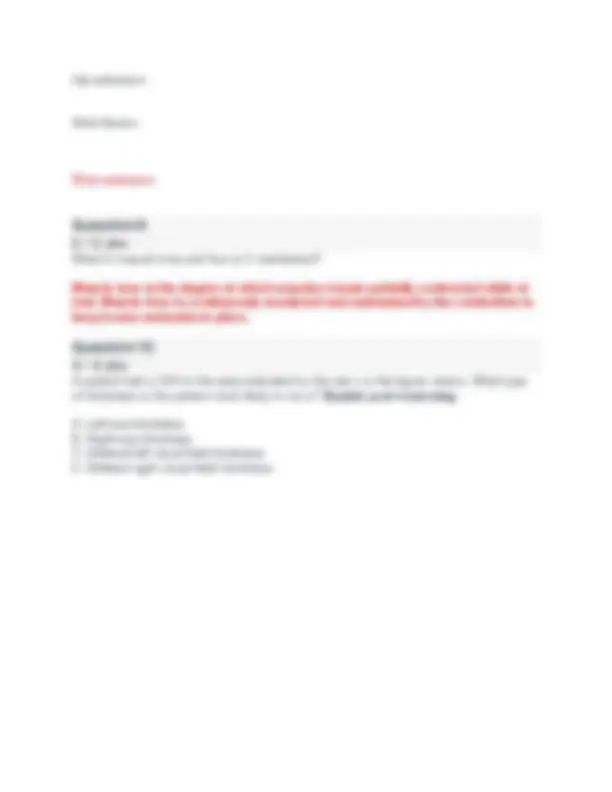
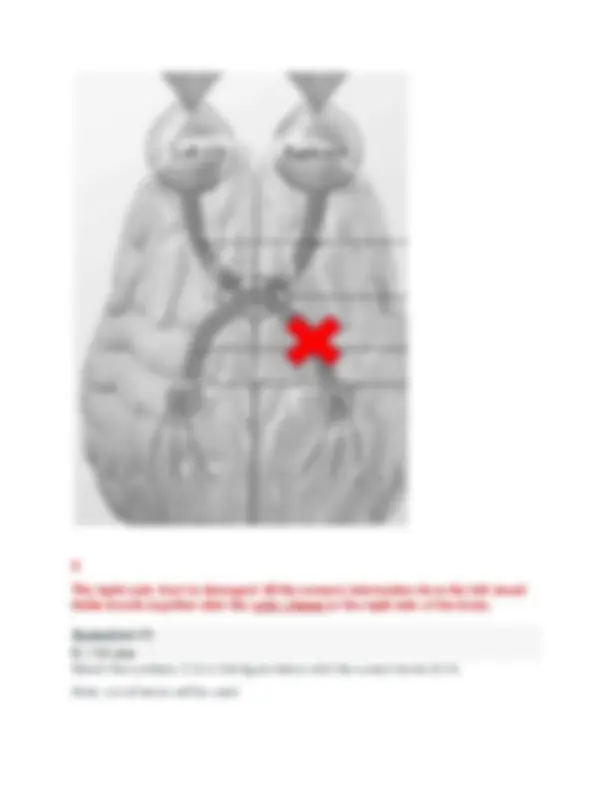
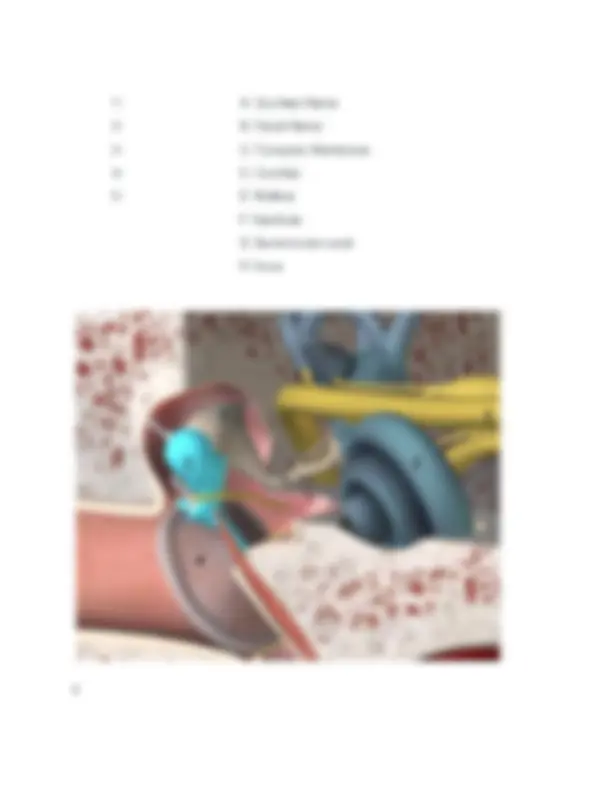
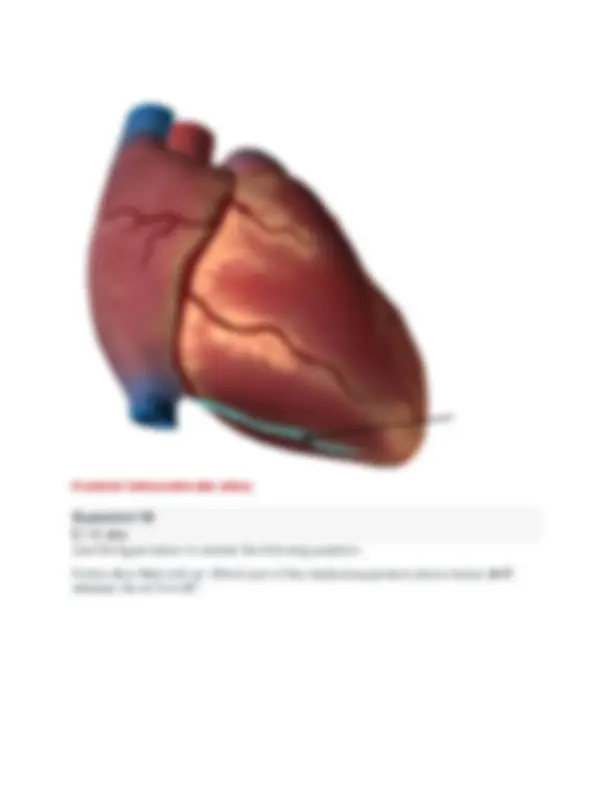
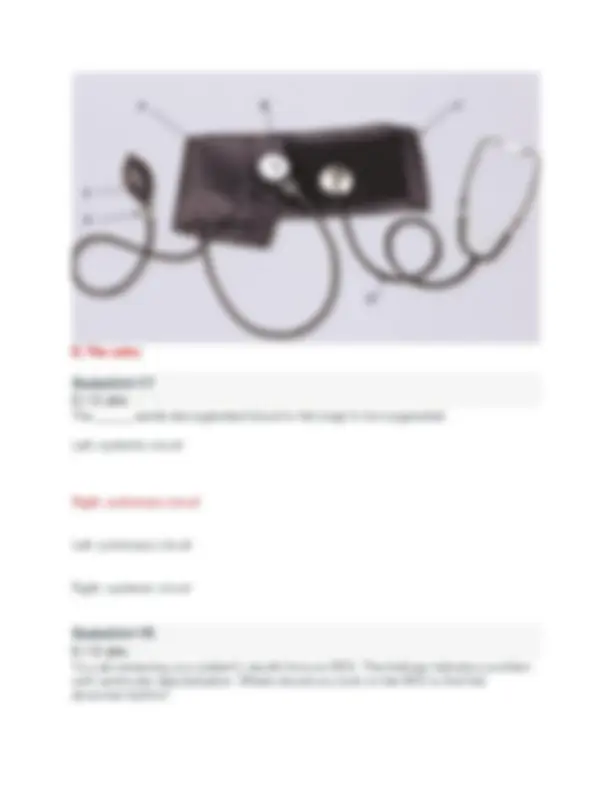
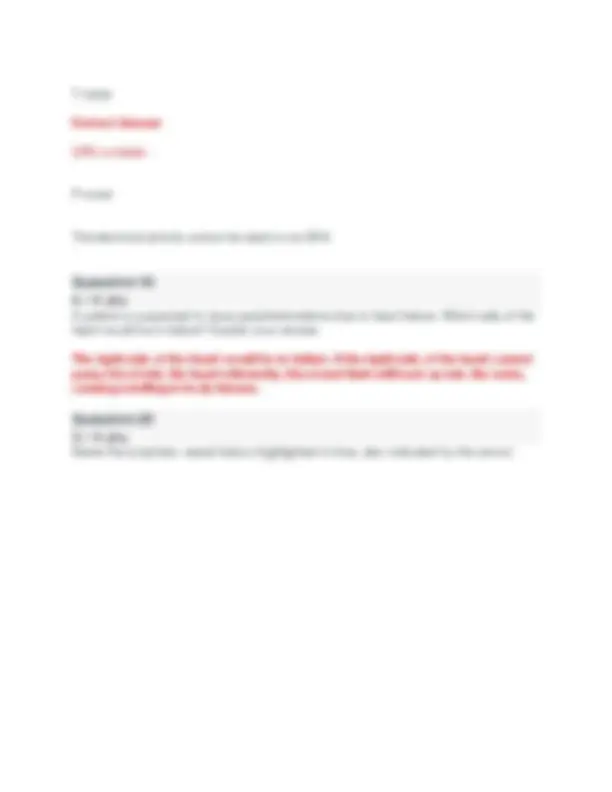
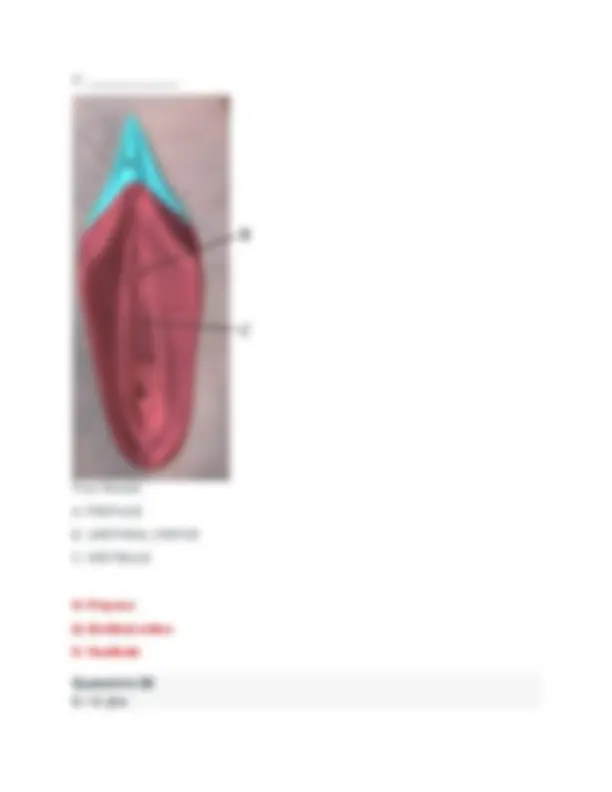
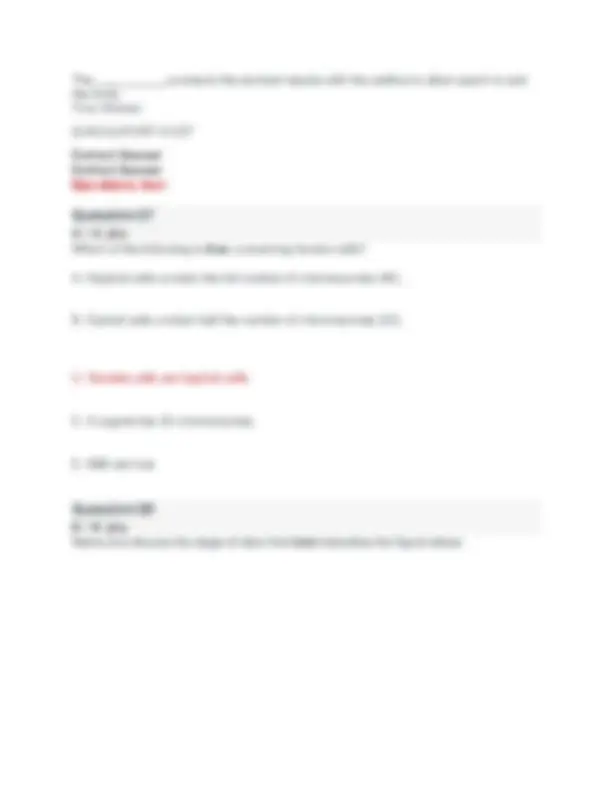
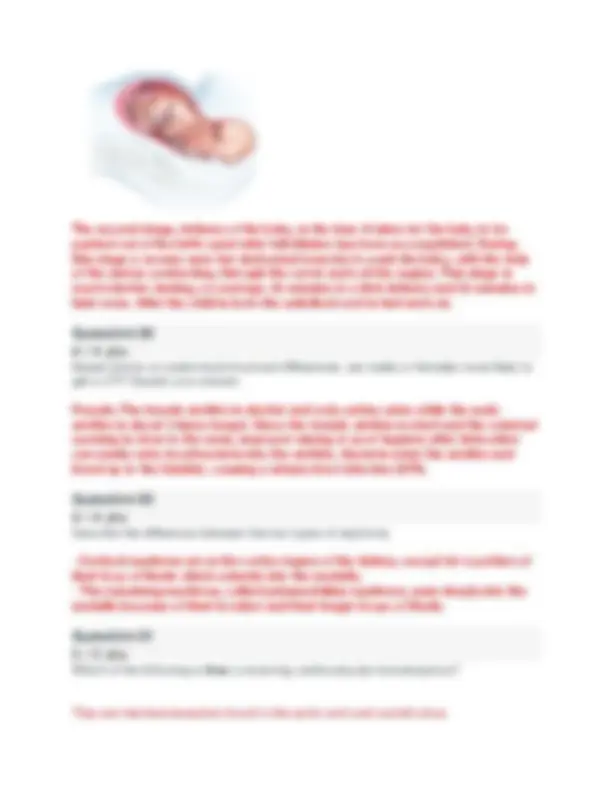
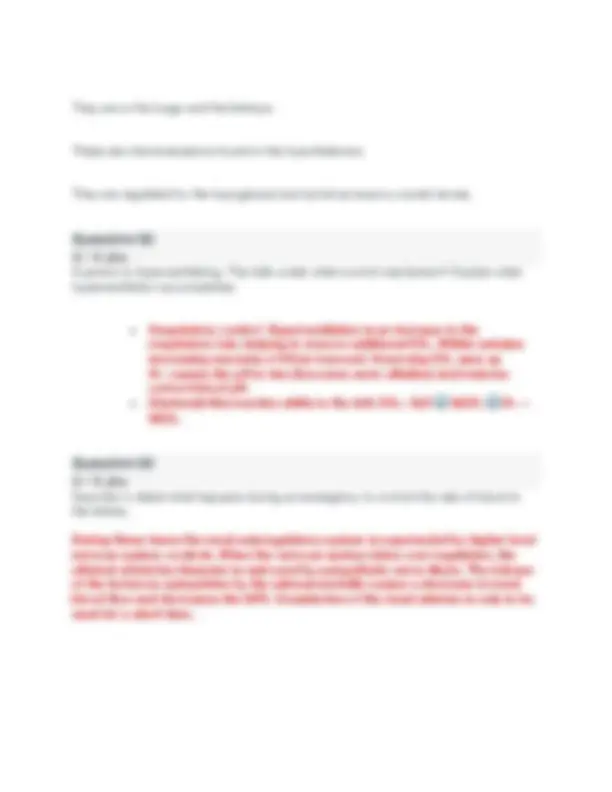




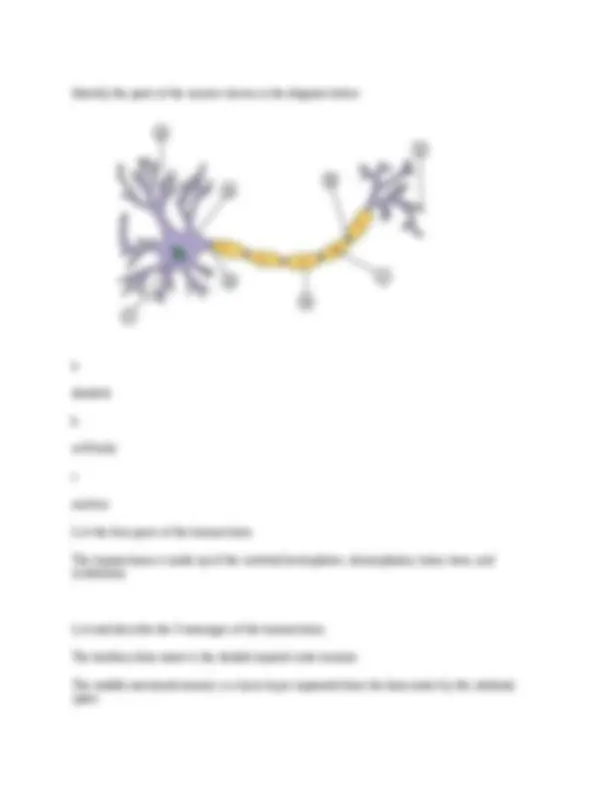
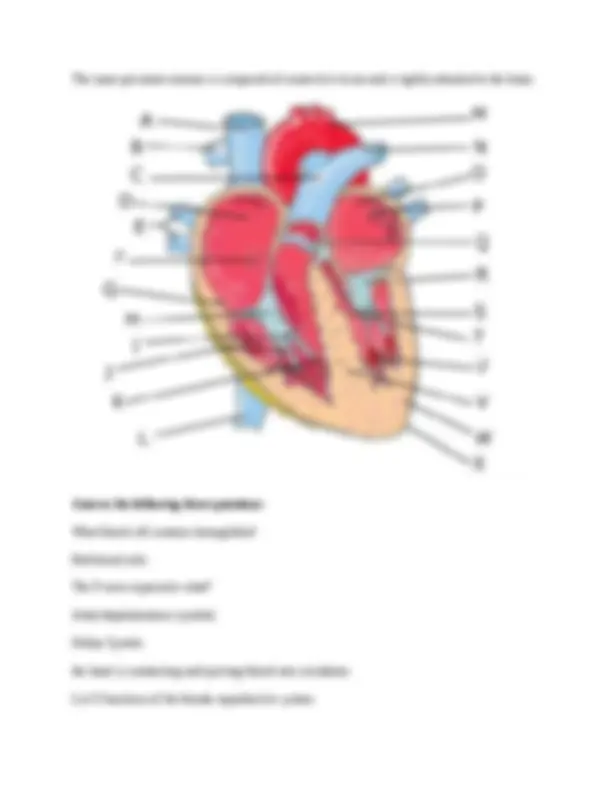
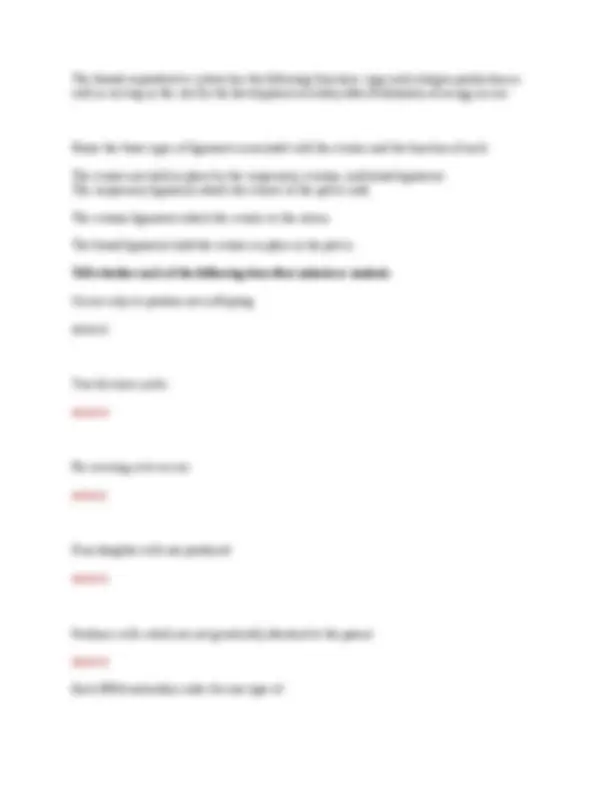
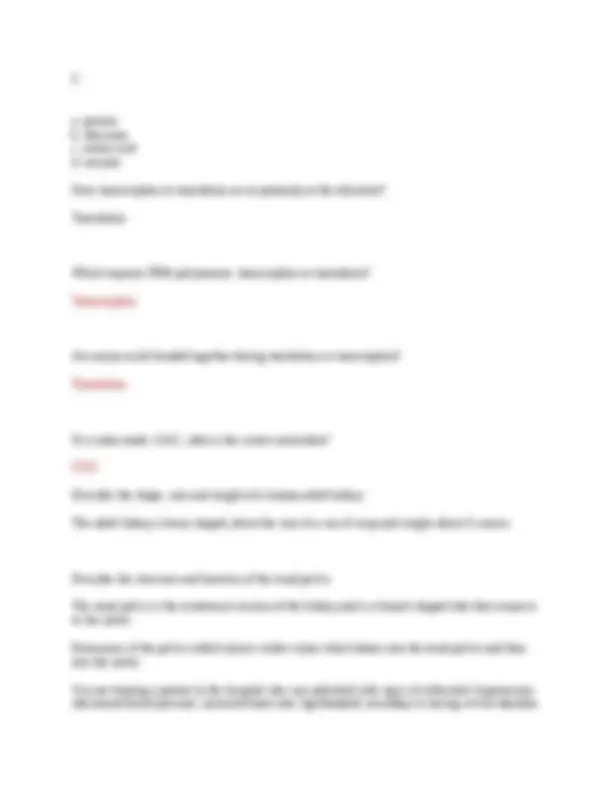
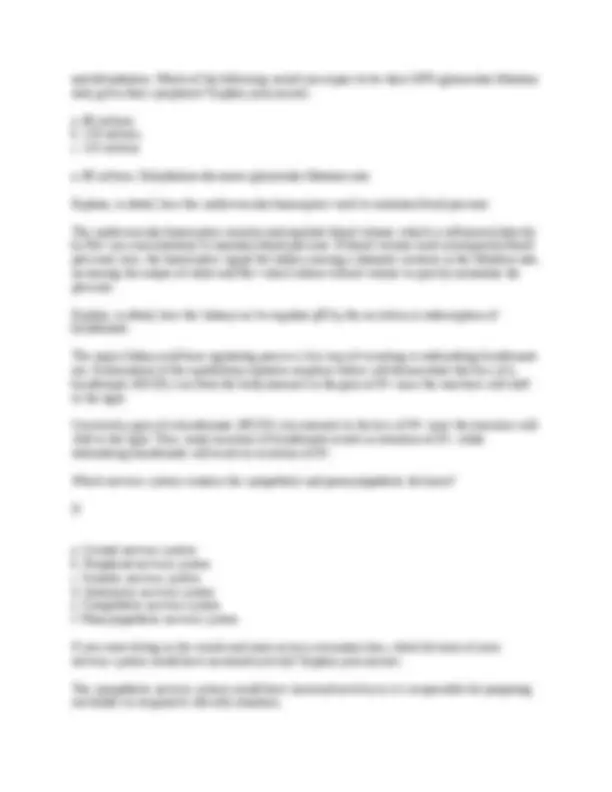
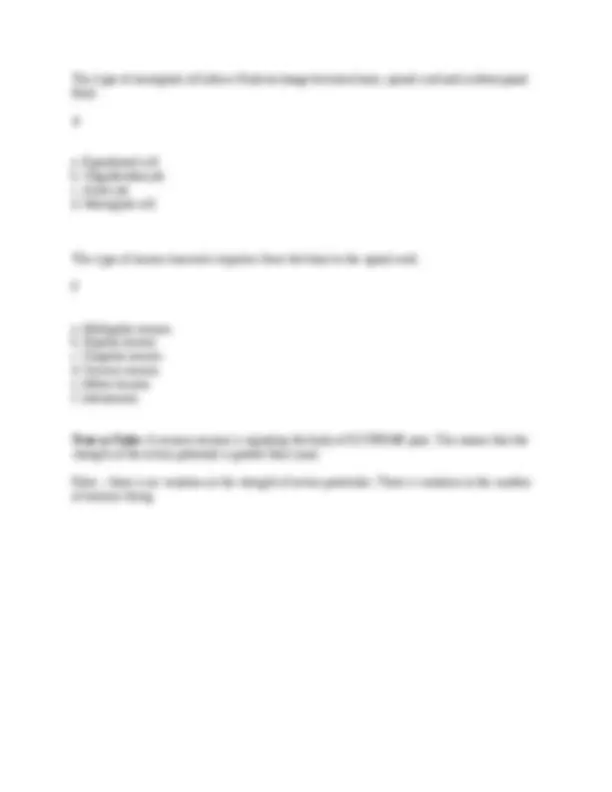
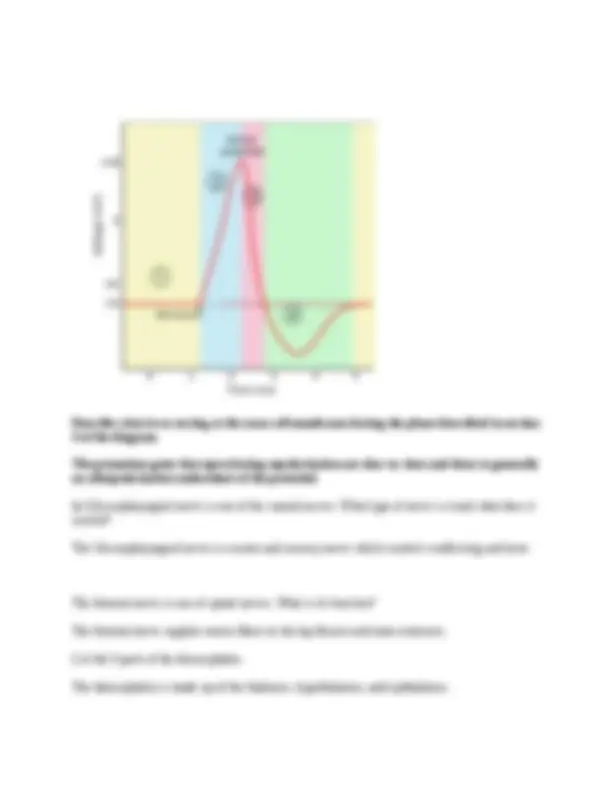
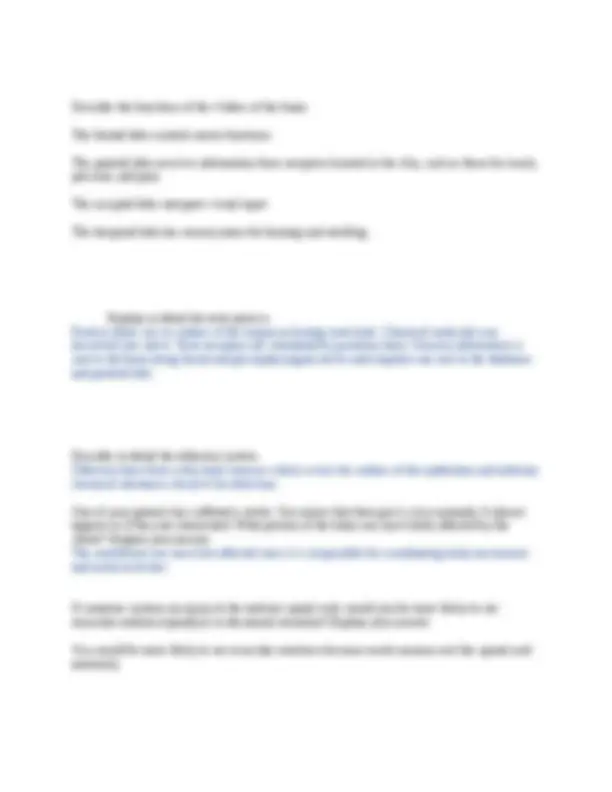
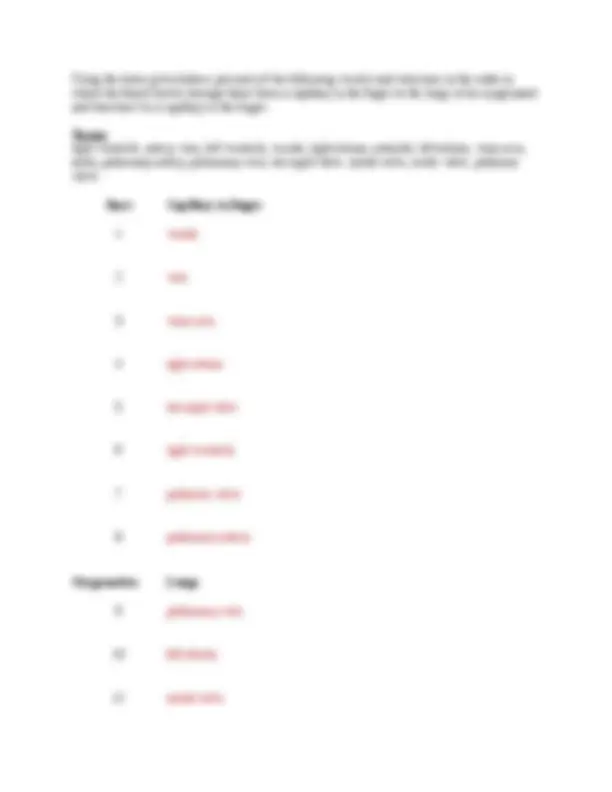
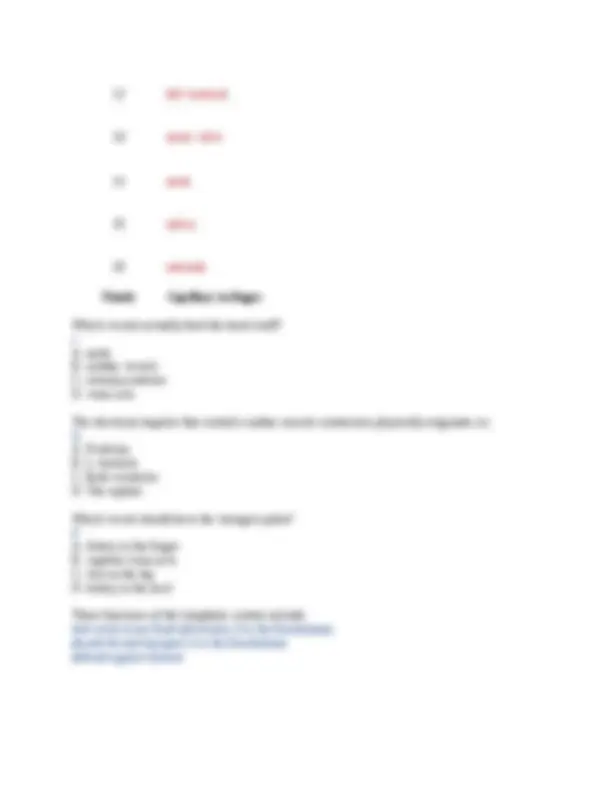

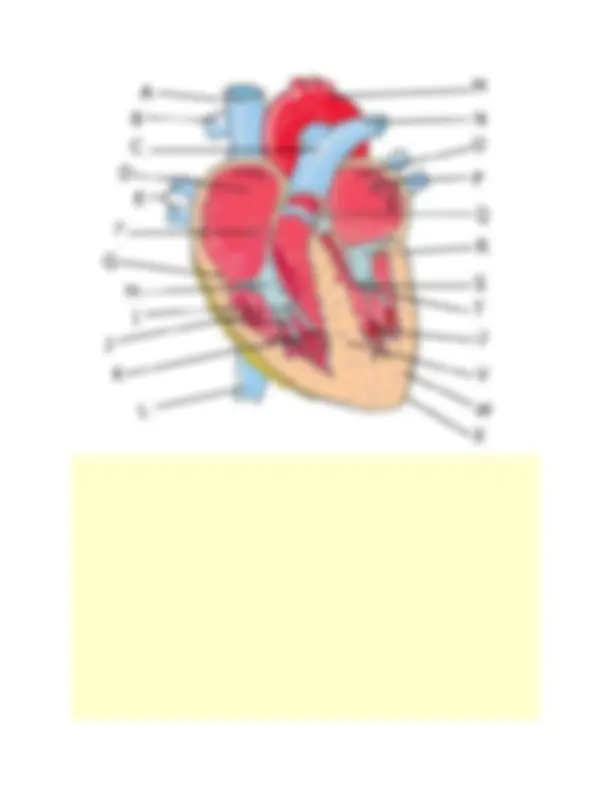
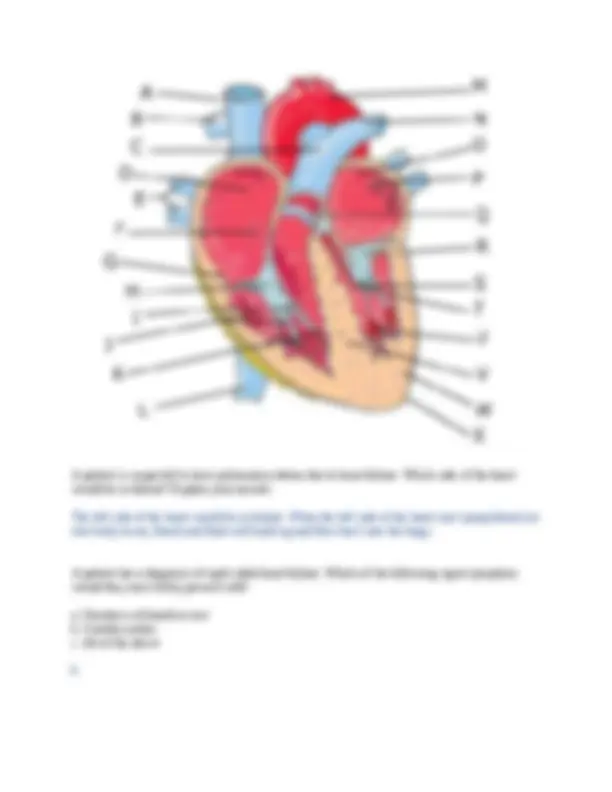
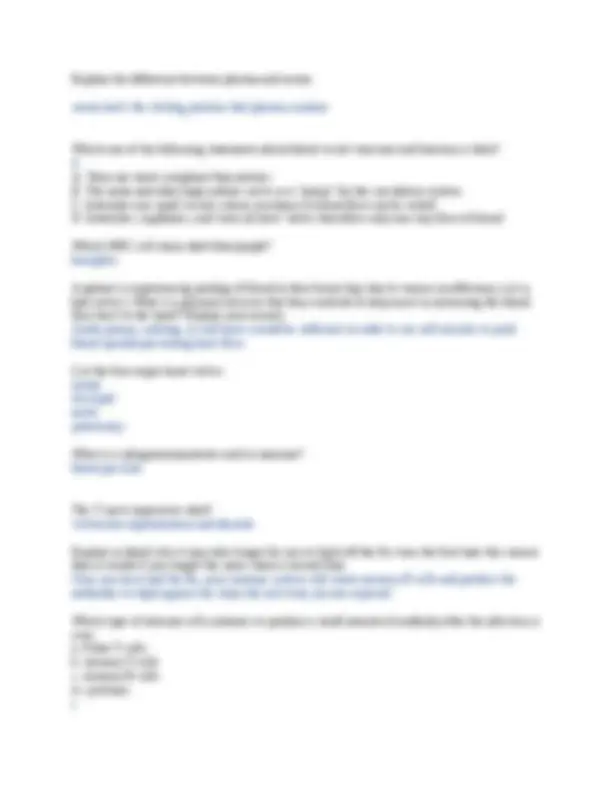
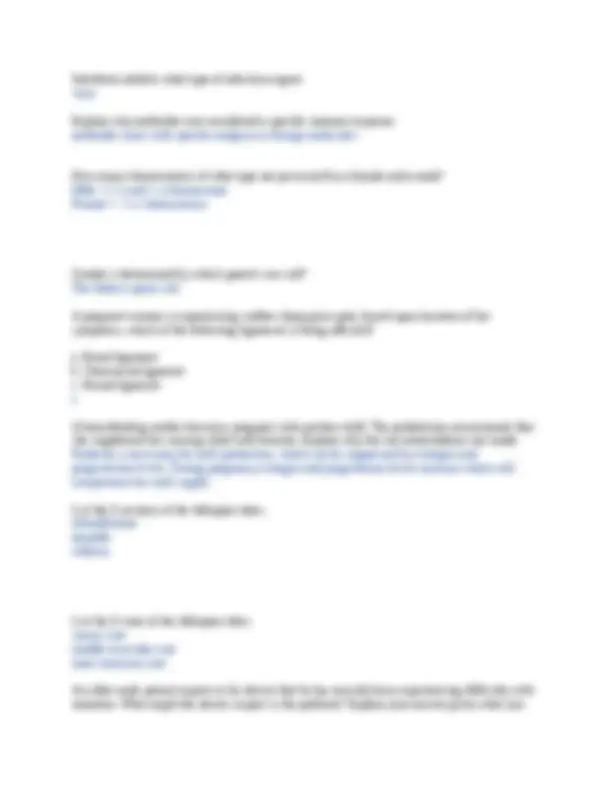
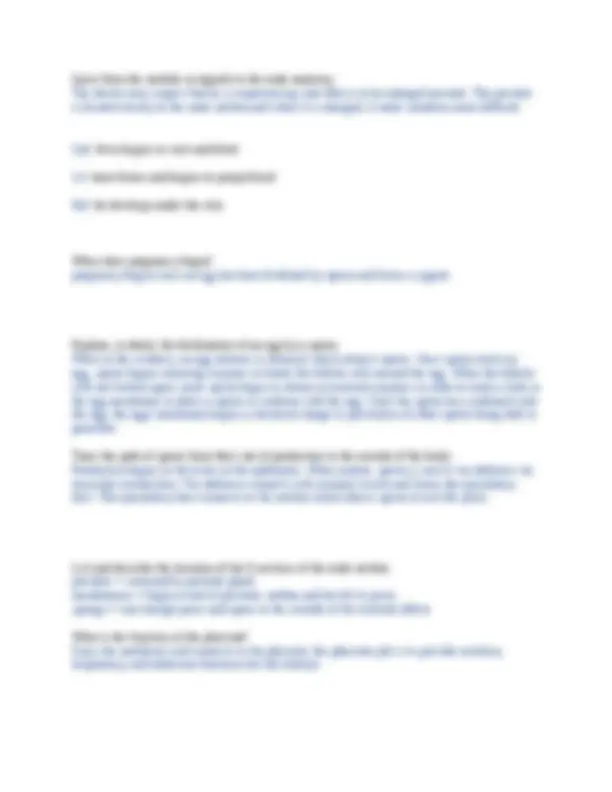
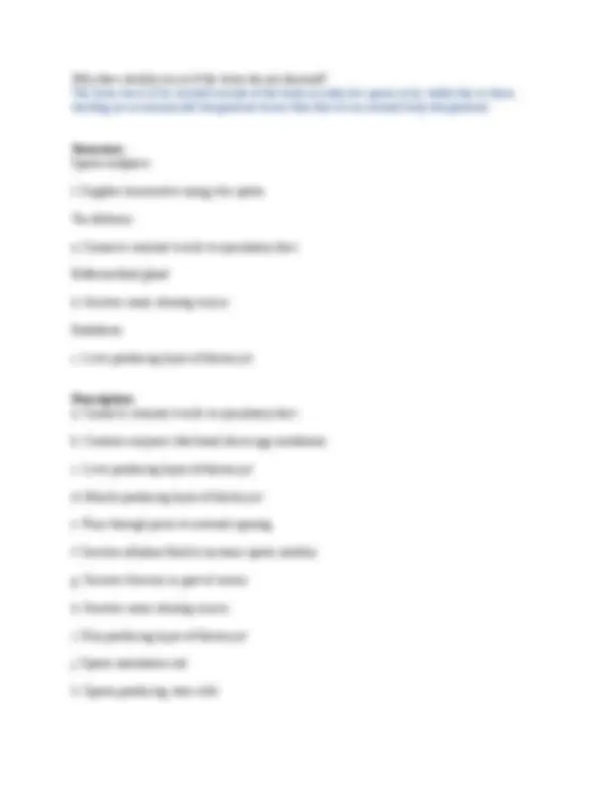
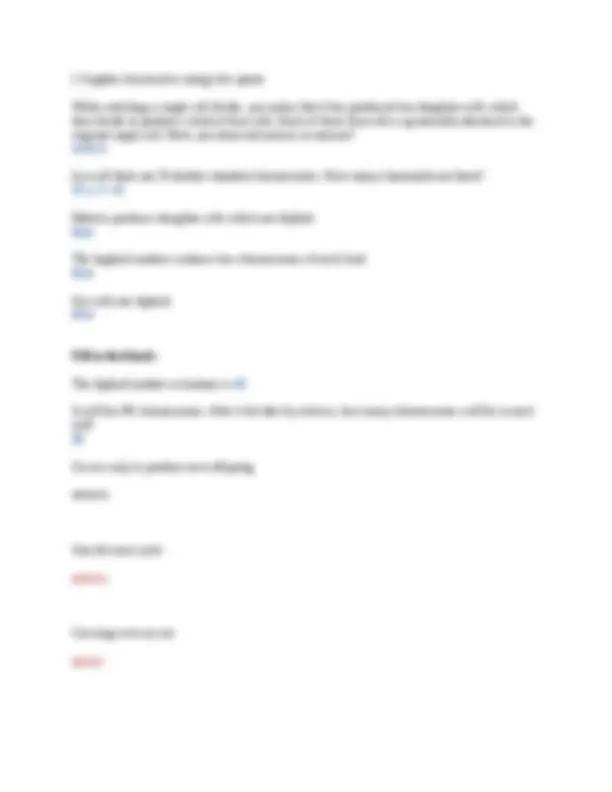
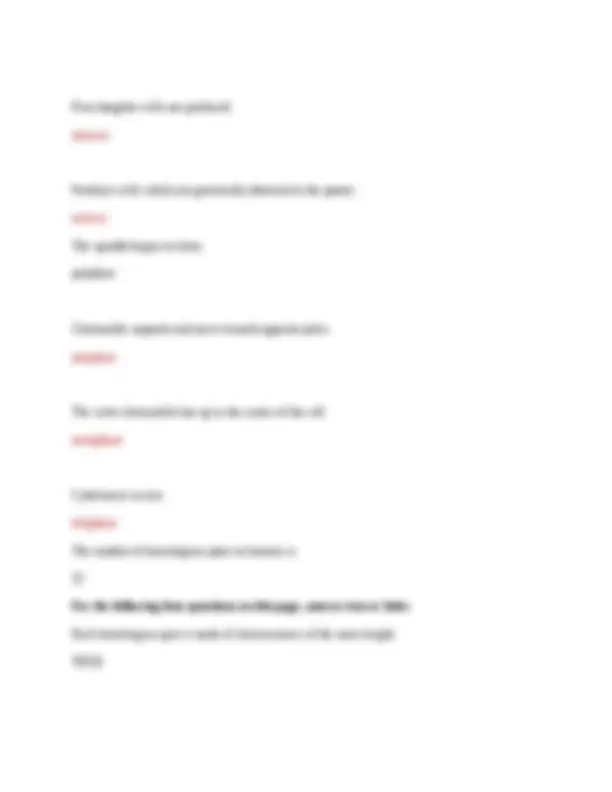
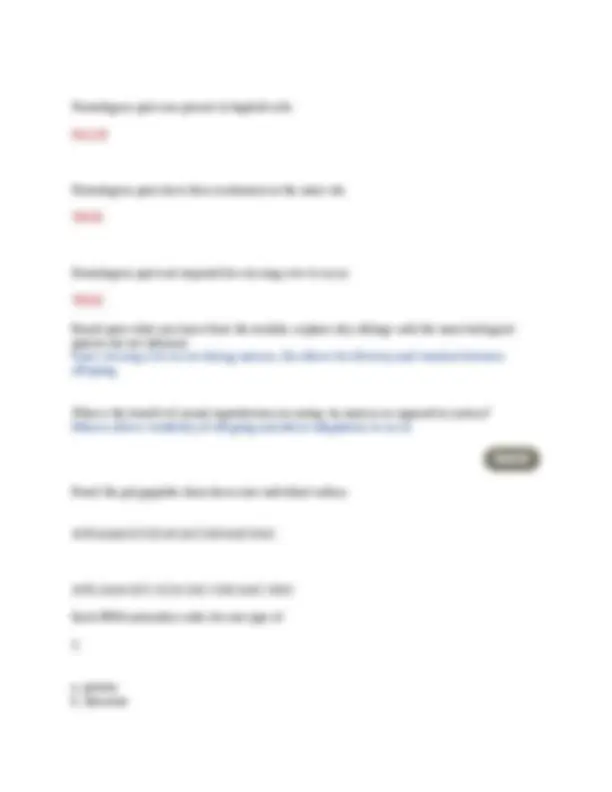
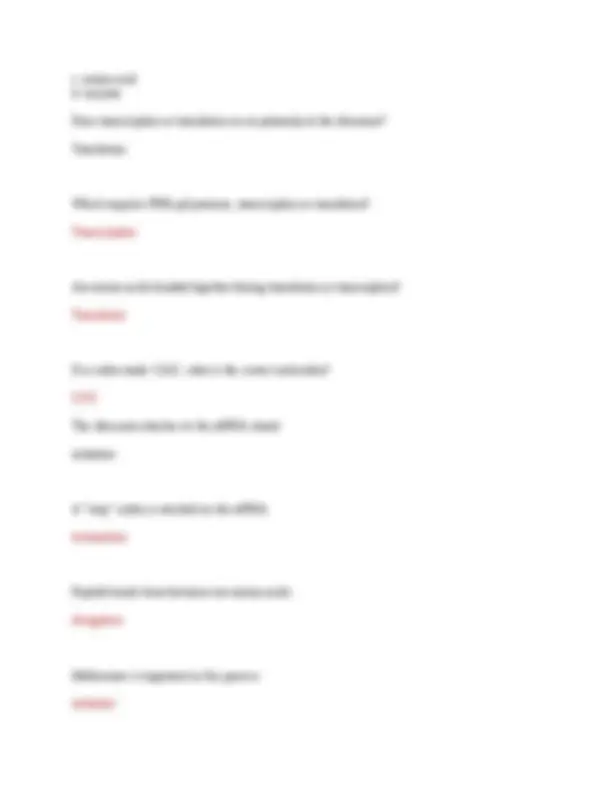
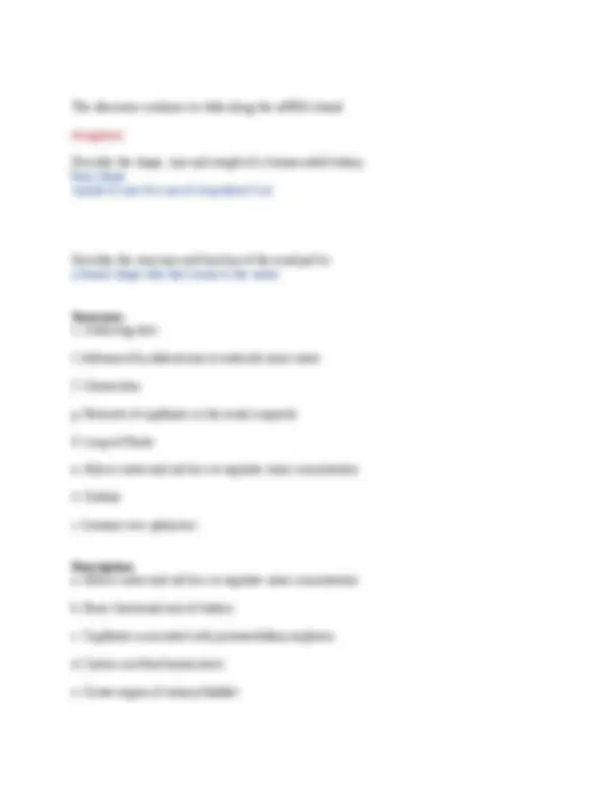
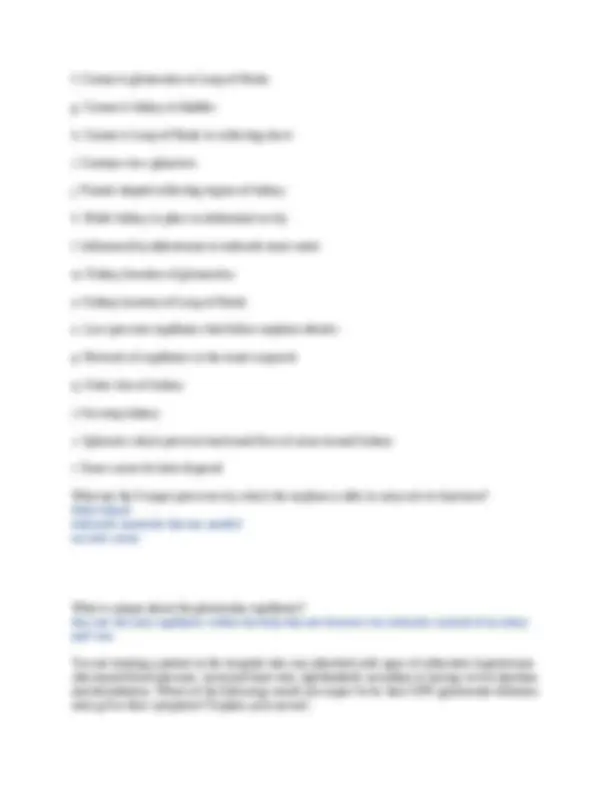
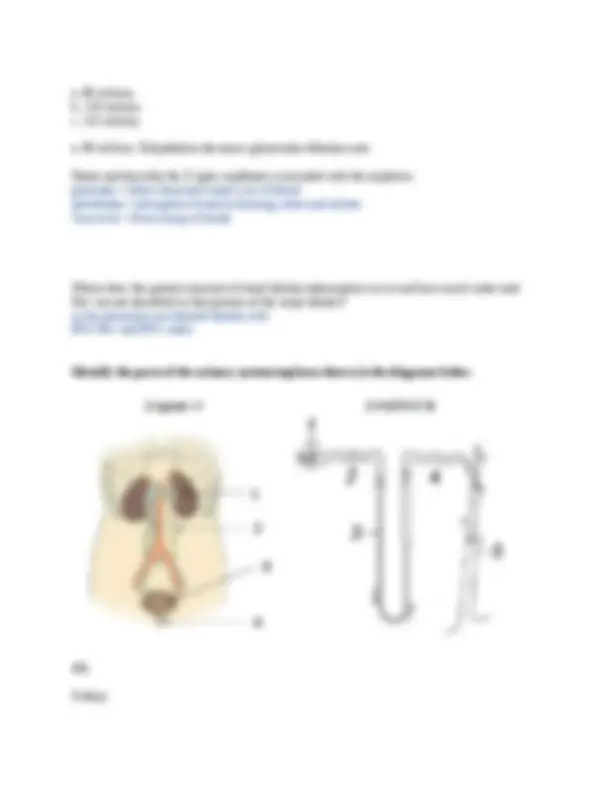
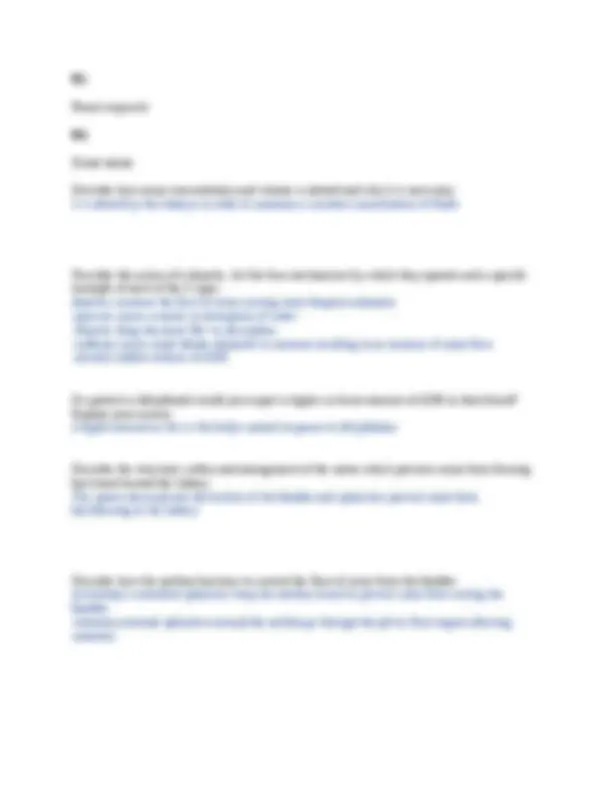
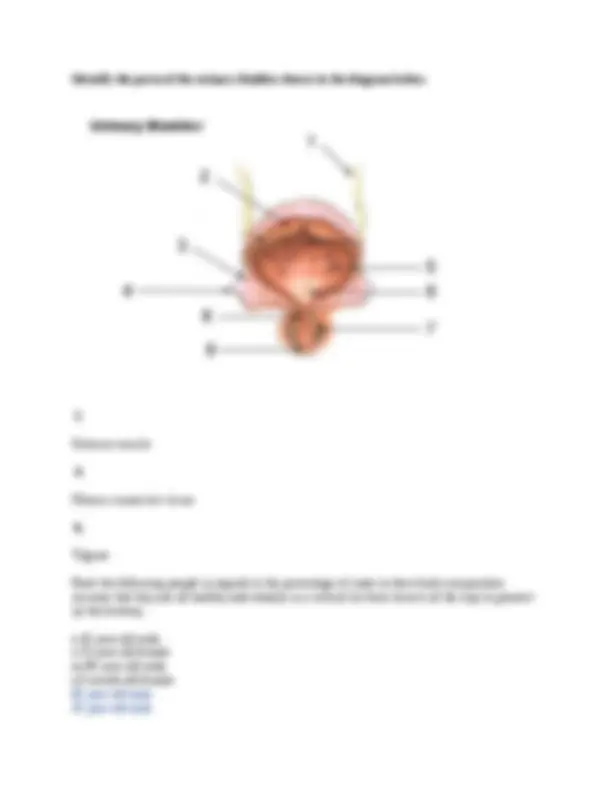
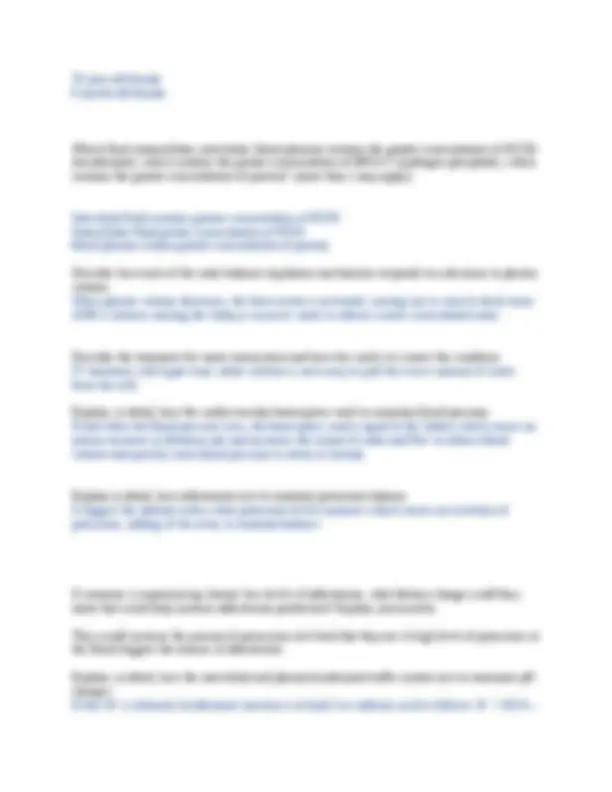
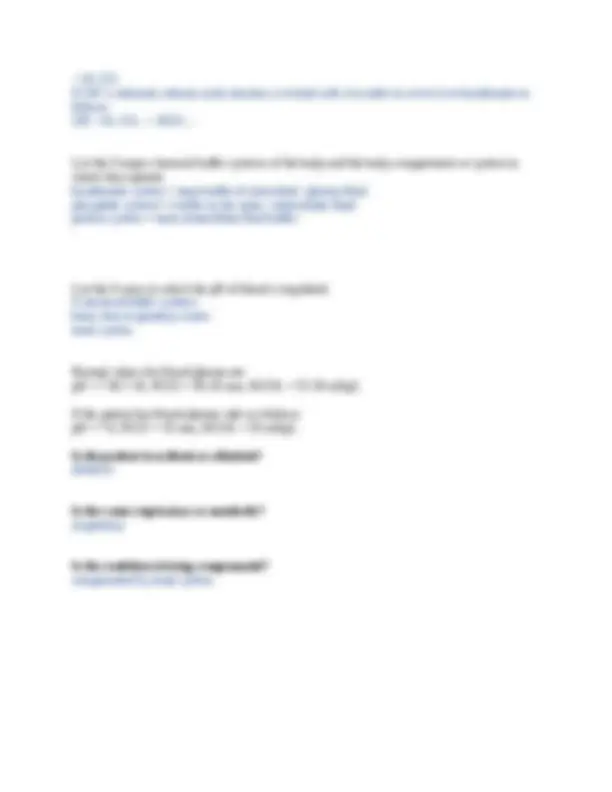


Study with the several resources on Docsity

Earn points by helping other students or get them with a premium plan


Prepare for your exams
Study with the several resources on Docsity

Earn points to download
Earn points by helping other students or get them with a premium plan
Community
Ask the community for help and clear up your study doubts
Discover the best universities in your country according to Docsity users
Free resources
Download our free guides on studying techniques, anxiety management strategies, and thesis advice from Docsity tutors
BIOD 152 Final Exam (3 Versions, 2024-2025)/ BIOD152 Final Exam / BIOD152 A & P 2 Final Exam: Essential Human Anatomy & Physiology II: Portage Learning
Typology: Exams
1 / 53

This page cannot be seen from the preview
Don't miss anything!














































Multipolar Unipolar Pseudounipolar
Name and describe what is occurring in the neuron cell membrane in section 4 of the diagram. Include the charge of the membrane during this phase. Your Answer:
Where is the integration center of a reflex located? CNS (central nervous system)
What is true about the flexor withdrawal reflex? A. It does not involve interneurons. B. It involves excitatory interneurons. C. It involves inhibitory interneurons. D. The effect of the reflex is to create a co-contraction of two muscles E. A&D Correct! F. B&C
Label the nerves (A-C) in the figure below: A: _________________ B: _________________ C: _________________
B- Femoral nerve C- Saphenous
Which of the following is most likely a symptom of ALS? Correct! Impaired ability to swallow Decreased sensation in the hands Shrinkage of cerebral cortex Increased size of brain ventricles All the above
What is the purpose of the blood-brain barrier? Describe its maintenance from a cellular level. The blood-brain barrier is a diffusion barrier which prevents most particles from entering the central nervous system tissue, keeping the brain and spinal cord separate from general blood circulation. The blood-brain barrier is formed by the relatively impermeable brain capillaries, due to the glial cells astrocytes. Maintenance of the blood-brain-barrier is important to provide a stable chemical environment for the nervous system.
A patient damaged the radial nerve. What action is most likely limited? Elbow flexion
Hip extension Wrist flexion Correct! Wrist extension
What is muscle tone and how is it maintained? Muscle tone is the degree at which muscles remain partially contracted while at rest. Muscle tone is continuously monitored and maintained by the cerebellum to keep bones and joints in place.
A patient had a CVA in the area indicated by the red x in the figure, below. What type of blindness is the patient most likely to incur? Explain your reasoning. A. Left eye blindness B. Right eye blindness C. Bilateral left visual field blindness D. Bilateral right visual field blindness.
1 - A: Cochlear Nerve 2 - B: Facial Nerve 3 - C: Tympanic Membrane 4 - D: Cochlea 5 - E: Malleus F: Vestibule G: Semicircular canal H: Incus You Answered 1
A. Cochlear Nerve B. Facial Nerve Correct! 2 E. Malleus Correct! 3 D. Cochlea Correct! 4 C. Tympanic Membrane Correct! 5 H. Incus
The tongue helps form food into a compact mass called a _____. Papillae Gustatory cell Taste Bud Correct! Bolus
True of False The tongue contains nociceptors and thermoreceptors in addition to chemoreceptors. Correct!
Posterior Intraventricular artery
Use the figure below to answer the following question. Portion A is filled with air. Which part of the medical equipment shown below ( B-F ) releases the air from A?
E. The valve
The ______ sends deoxygenated blood to the lungs to be oxygenated. Left, systemic circuit Correct! Right, pulmonary circuit Left, pulmonary circuit Right, systemic circuit
You are reviewing your patient’s results from an EKG. The findings indicate a problem with ventricular depolarization. Where should you look on the EKG to find this abnormal rhythm? You Answered
Thoracic Duct/Left Lymphatic Duct
Blood enters the spleen via the _______________. Your Answer: splenic artery Splenic artery
Interferons inhibits what type of infection agent: Your Answer: virus Virus
A patient is admitted to the ER with hives and difficulty breathing. What is most likely happening? Your Answer: the patient is likely experiencing anaphylaxis because of an allergic reaction Anaphylaxis
Match the cell with its best description. Select all that apply. Performs phagocytosis Correct! Neutrophil Correct! Eosinophil Correct Answer Basophil Correct! Macrophage Correct! Monocyte
Label the regions of the reproductive system below: (A-C) A: _______________ B: _______________
The ____________connects the seminal vesicle with the urethra to allow sperm to exit the body. Your Answer: EJACULATORY DUCT Correct Answer Correct Answer Ejaculatory duct
Which of the following is true concerning human cells? A. Haploid cells contain the full number of chromosomes (46). B. Diploid cells contain half the number of chromosomes (23). Correct! C. Gamete cells are haploid cells. D. A zygote has 23 chromosomes. E. A&B are true
Name and discuss the stage of labor that best describes the figure below:
The second stage, delivery of the baby, is the time it takes for the baby to be pushed out of the birth canal after full dilation has been accomplished. During this stage a woman uses her abdominal muscles to push the baby, with the help of the uterus contracting, through the cervix and out the vagina. This stage is much shorter, lasting, on average, 50 minutes in a first delivery and 20 minutes in later ones. After the child is born the umbilical cord is tied and cut.
Based strictly on anatomical structural differences, are males or females more likely to get a UTI? Explain your answer. Female; The female urethra is shorter and only carries urine while the male urethra is about 5 times longer. Since the female urethra is short and the external opening is close to the anus, improper wiping or poor hygiene after defecation can easily carry fecal bacteria into the urethra. Bacteria enter the urethra and travel up to the bladder, causing a urinary tract infection (UTI).
Describe the difference between the two types of nephrons.
**- Cortical nephrons are in the cortex region of the kidney, except for a portion of their loop of Henle which extends into the medulla.
Which of the following is true concerning cardiovascular baroreceptors? Correct! They are mechanoreceptors found in the aortic arch and carotid sinus.